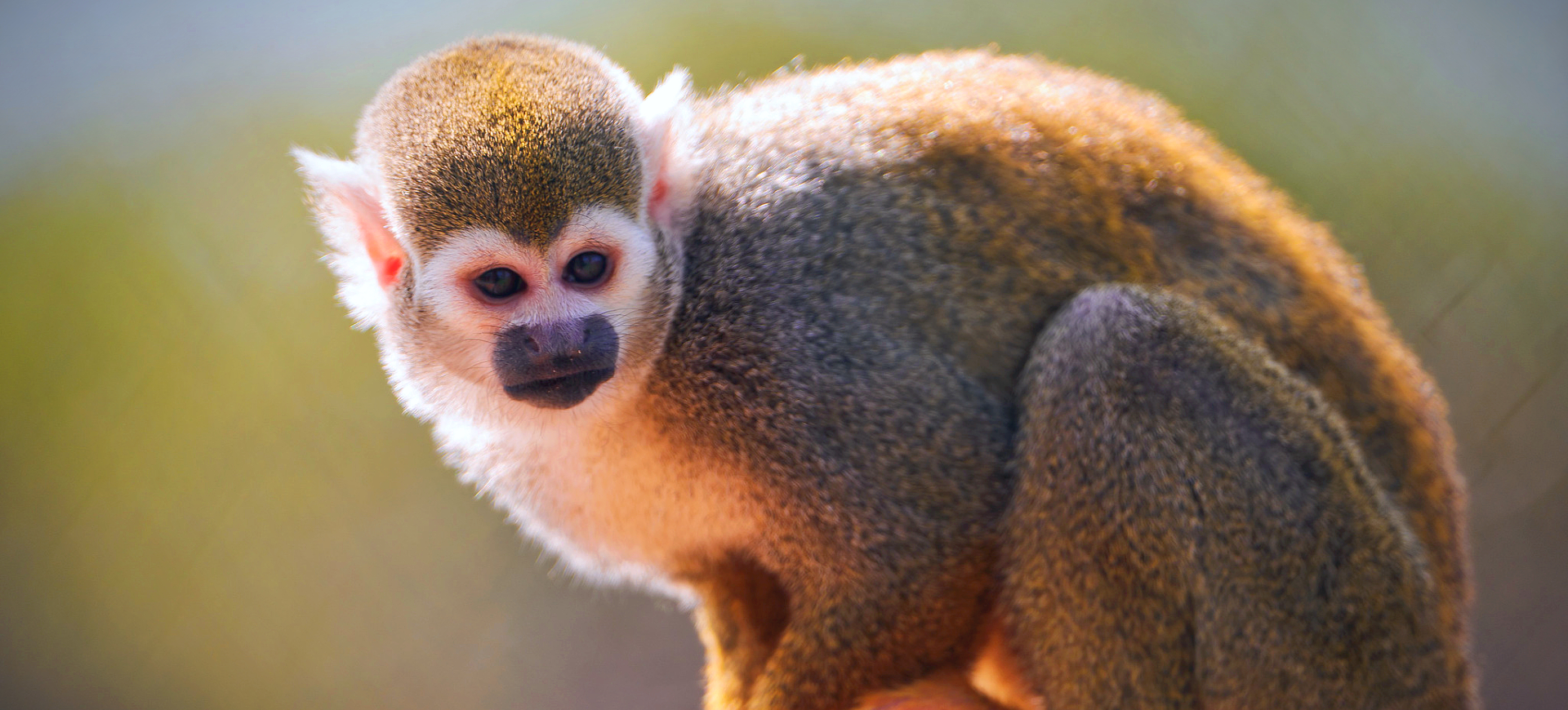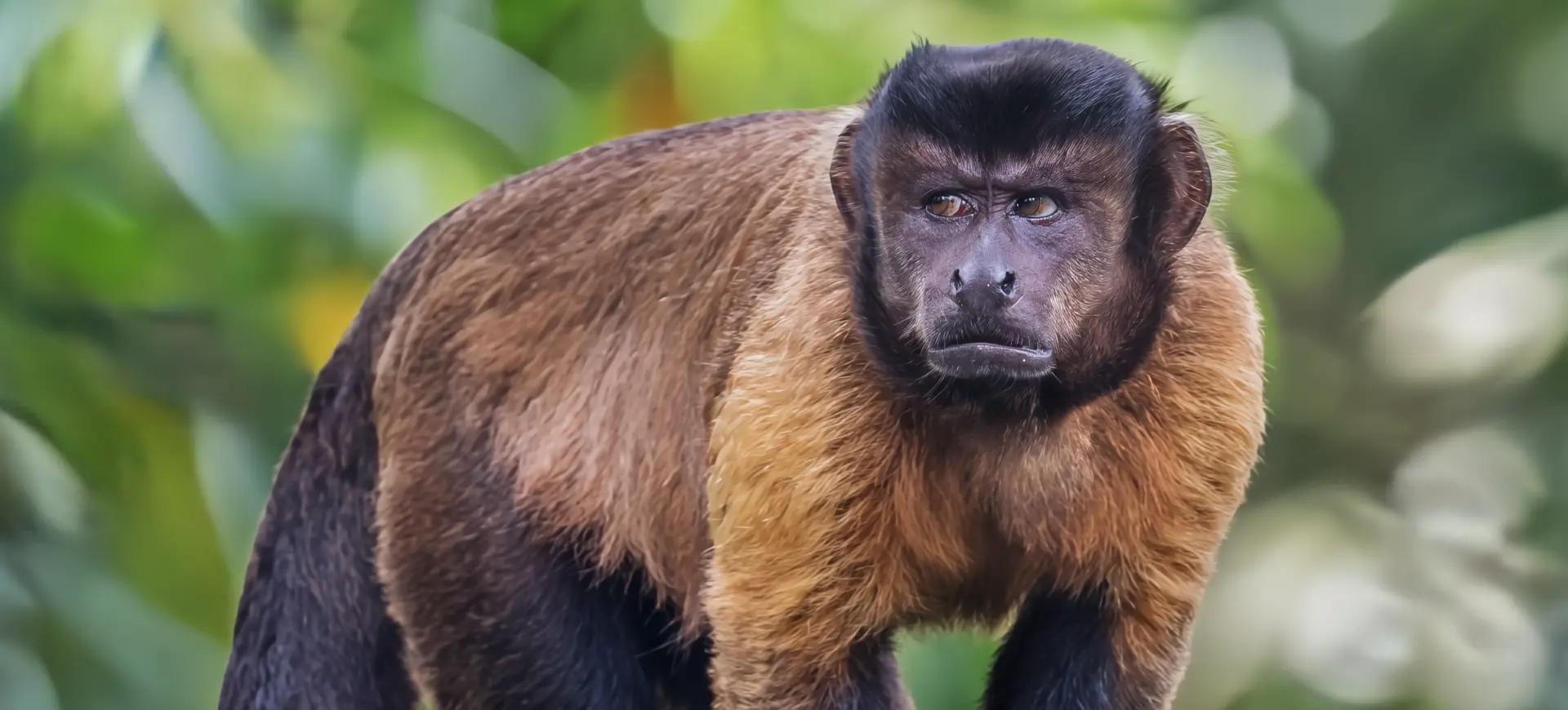Overview
The Colombian White-faced Capuchin, known scientifically as Cebus capucinus, is a New World primate native to the tropical forests of Colombia. Characterized by their distinctive white faces, these monkeys are highly social and intelligent. Their body length ranges from 33 to 45 centimeters (13 to 18 inches), not including their tails, which are almost as long as their bodies. Colombian White-faced Capuchins are known for their skill and are often seen using tools in the wild, a behavior that highlights their advanced cognitive abilities.
These primates exhibit various vocalizations and facial expressions used for communication within their social groups. Their diverse diet consists of fruits, insects, small vertebrates, and various plant parts. Colombian White-faced Capuchins play a vital role in their ecosystem as seed dispersers, aiding in maintaining tropical forest diversity. Their day ranges from dawn to dusk, during which they forage, socialize, and engage in grooming behaviors essential for social bonding and hierarchy establishment.
Colombian White-faced Capuchins are known for their adaptability to various habitats within their range. However, they prefer primary and secondary tropical rainforests, where they find the bulk of their food and shelter. Unfortunately, habitat destruction and the pet trade pose significant threats to their populations, leading to concerns about their long-term survival in the wild.
Taxonomy
Kingdom
Phylum
Class
Order
Family
Genus
Species
Sub Species
Type
Physical Description:
Colombian White-faced Capuchins are medium-sized monkeys with predominantly black or dark brown bodies, contrasted by their white or light-colored faces and shoulders. They possess a prehensile tail, which acts as a fifth limb, aiding them in navigating the treetops with remarkable agility. Their facial skin changes color from pink to black as they age, and their expressive faces play a crucial role in social interactions. Their fur is coarse and thick, an adaptation to the wet environments they often inhabit.
Males are generally larger and more robust than females, with more pronounced canine teeth used for display and in conflicts. Their hands and feet are nimble, equipped with opposable thumbs and big toes, allowing them to grasp objects and food efficiently. Colombian White-faced Capuchins have a lean, muscular build, essential for their arboreal lifestyle, enabling them to leap between trees and branches. Their physical adaptations testify to their arboreal and active lifestyle in tropical forests.

Lifespan: Wild: ~25 Years || Captivity: ~45 Years

Weight: Male: 6.6-8.8 lbs (3-4 kg) || Female: 4.4-6.6 lbs (2-3 kg)

Length: Male: 13-17.7 inches (33-45 cm) || Female: 12.2-15.7 inches (31-40 cm)

Height: Male: 13.8-17.7 inches (35-45 cm) || Female: 12.6-15.7 inches (32-40 cm)

Top Speed: 24 mph (39 km/h)
Characteristic:
Native Habitat:
The Colombian White-faced Capuchin is native to the humid forests of Colombia. Their preferred habitats are primary and secondary tropical rainforests, where they have access to abundant food sources and shelter. They are also found in dry forests and mangroves, demonstrating their adaptability to different forest types.
These primates are arboreal, spending most of their time in the tree canopies. Their physical adaptations, such as prehensile tails and agile limbs, suit this environment well. They use the forest’s vertical stratification to their advantage, foraging and moving at different forest levels. Colombian White-faced Capuchins also utilize riverine forests and areas near water sources, providing essential resources for survival.
Climate Zones:
Biomes:
Biogeographical Realms:
Continents:
Diet:
Diet & Feeding Habits:
Colombian White-faced Capuchins are omnivores with a highly varied diet. Their diet primarily consists of fruits, supplemented by insects, plant material, small vertebrates, and even bird eggs. This varied diet reflects their adaptability and ability to exploit different food sources depending on availability. They are known to be opportunistic feeders, adjusting their diet based on seasonal changes in food availability.
Their foraging behavior is complex and often involves tool use, a rare skill among primates. They have been observed using stones to crack open hard-shelled fruits and nuts, showcasing their problem-solving abilities. Colombian White-faced Capuchins also practice extractive foraging, which involves removing insects or small animals from tree bark or crevices. This behavior indicates a high level of cognitive function and spatial awareness.
Mating Behavior:
Mating Description:
The Colombian White-faced Capuchin’s mating system is polygynous, with dominant males having mating privileges with multiple females. Males engage in various displays, including vocalizations and physical demonstrations, to attract females and deter rivals. Female capuchins exhibit proceptivity and receptivity cues, indicating their willingness to mate. Mating often occurs within a stable social group, where relationships and hierarchies influence reproductive success.
Gestation in Colombian White-faced Capuchins lasts approximately 160 to 180 days, resulting in the birth of a single offspring. Infants are born with a dark coat, which gradually lightens as they age. Mothers are the primary caregivers, although other group members, especially juveniles and subadults, may participate in alloparenting. The high level of sociality in these primates is reflected in their complex mating and parenting behaviors, which contribute to group cohesion and stability.
Reproduction Season:
Birth Type:
Pregnancy Duration:
Female Name:
Male Name:
Baby Name:
Social Structure Description:
The social structure of Colombian White-faced Capuchins is highly complex and hierarchical. Groups typically comprise multiple males and females, with a clear dominance hierarchy among both sexes. Dominant individuals have priority access to food and mating opportunities and play a crucial role in group decision-making and conflict resolution.
Social interactions within the group are multifaceted, including grooming, play, and cooperative behaviors such as hunting and defending territory. Communication is a key aspect of their social structure, involving a range of vocalizations, facial expressions, and body postures. Social learning is prominent, with younger members learning from the adults, particularly in foraging and tool use. Their social structure is dynamic, with individuals sometimes switching groups, which helps maintain genetic diversity and social bonds.
Groups:
Conservation Status:
Population Trend:
The population of Colombian White-faced Capuchins is relatively stable, particularly in protected areas and national parks. They are adaptable and can survive in various forest types, which has helped maintain their numbers despite habitat loss. In some regions, however, populations have declined due to deforestation and the pet trade.
These primates live in social groups of 10 to 35 individuals, with a complex hierarchy. Group sizes and dynamics can vary based on habitat quality and food availability. Within these groups is a clear dominance hierarchy, which plays a critical role in access to resources and mating opportunities. Despite their adaptability, ongoing environmental changes and human activities challenge their long-term population stability.
Population Threats:
The primary threats to the Colombian White-faced Capuchin include habitat loss, fragmentation, and degradation due to agricultural expansion, logging, and development. These activities reduce their available habitat and food sources, impacting their ability to survive and reproduce. The illegal pet trade also poses a significant threat, as these monkeys are often captured and sold due to their intelligence and friendly nature.
Hunting for food and traditional medicine has also contributed to their decline in some areas. Climate change is an emerging threat, potentially altering their habitat and food availability. Their adaptability provides some resilience, but continued habitat loss and human interference remain significant challenges to their survival.
Conservation Efforts:
Conservation efforts for Colombian White-faced Capuchins include habitat protection and restoration, particularly in national parks and reserves. These protected areas provide safe havens where they can live and reproduce without habitat destruction and hunting pressures. Environmental education and awareness campaigns are crucial in reducing the demand for these primates as pets and educating the public about the importance of conserving their natural habitats.
Research and monitoring programs help understand their population dynamics, behavior, and ecology, which is essential for effective conservation planning. International cooperation and legal protection under CITES (Convention on International Trade in Endangered Species of Wild Fauna and Flora) also play a role in curbing illegal trade. Continued efforts in these areas are essential for ensuring the long-term survival of Colombian White-faced Capuchins in the wild.
Additional Resources:
Fun Facts
- Colombian White-faced Capuchins are among the most intelligent primates known for their problem-solving skills.
- They use tools like stones to crack nuts, which is rare among primates.
- These monkeys are excellent swimmers, a unique trait among many primate species.
- They have various vocalizations used for communication, including screams, barks, and whistles.
- Capuchins participate in alloparenting, where group members other than the mother help care for the young.
- Their tail is as long as their body and is prehensile, acting as a fifth limb for balance and support.
- Colombian White-faced Capuchins have a varied diet, including fruits, insects, small vertebrates, and even bird eggs.
- They have a high level of social learning, with young monkeys learning skills from older group members.
- These monkeys are diurnal and spend most of their day foraging, socializing, and moving through the trees.
- Capuchins have been observed rubbing certain plants over their bodies, which is thought to be a form of self-medication or insect repellent.








